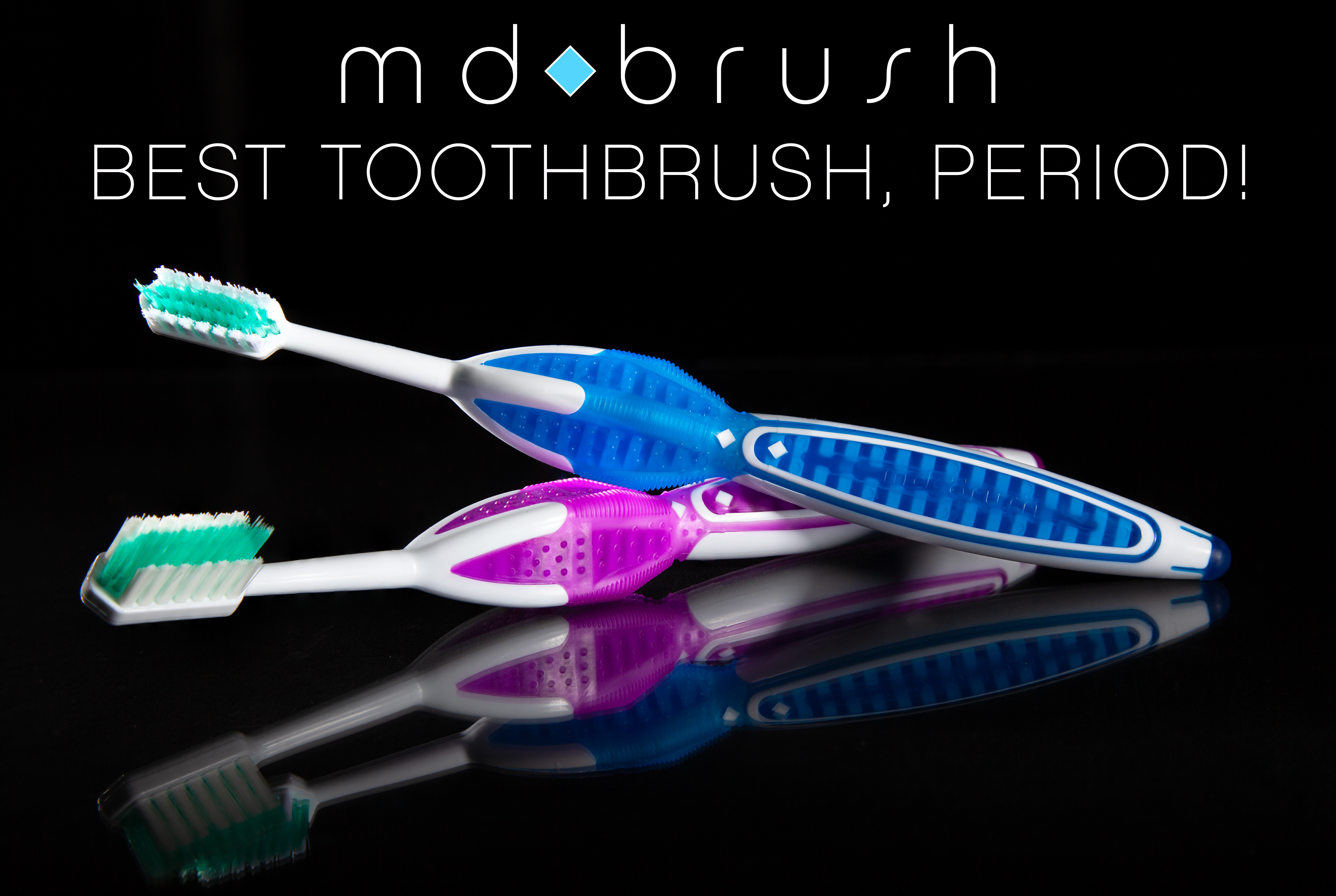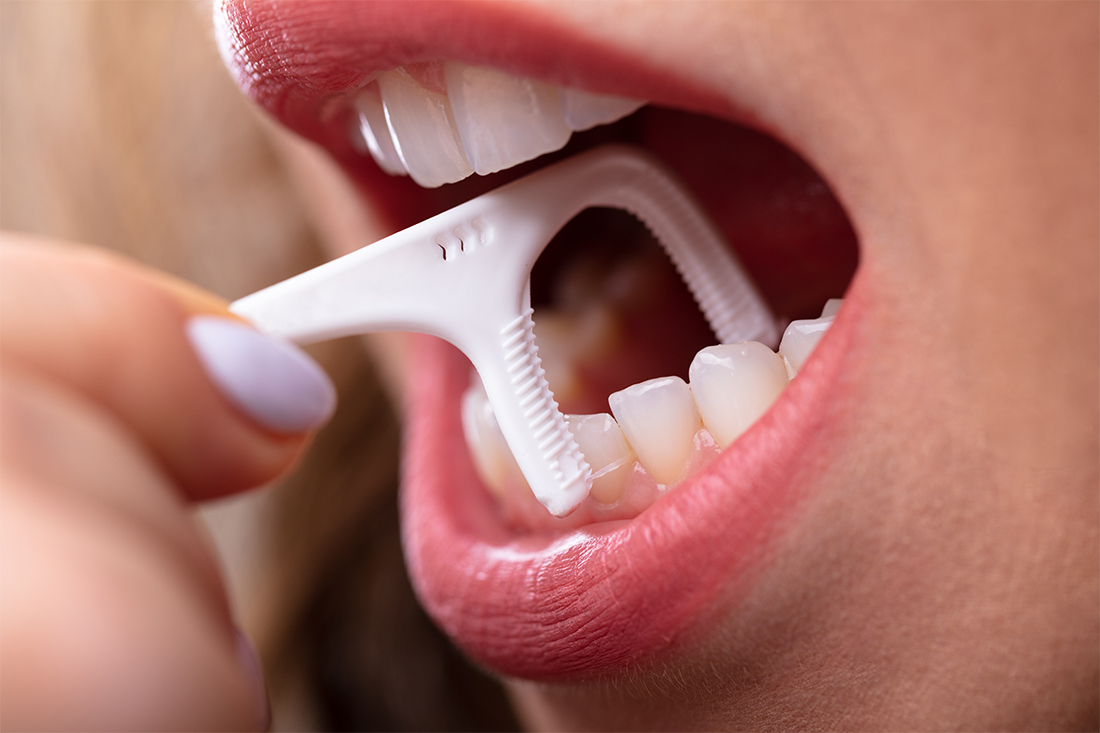Are Floss Picks Better Than Regular Floss?
Introduction
You can pick your friends and you can pick your brain, but should you pick your teeth? What about using those “little floss thingys”, as my wife calls them?
Using traditional floss can be a challenge. Many people choose floss picks to make the process easier, but they shouldn’t be a replacement for normal floss. Here’s why…
Why floss at all?
First of all why floss at all, isn’t brushing enough?
Brushing your teeth cleans the tops, and sides of your teeth, but it can’t do anything about the spaces between where food gets stuck. Flossing is the most effective way to remove harmful material from these areas.
Bacteria and food left behind can cause bad breath, tooth decay, bone loss, and inflammation which leads to gum disease. When your gums are inflamed, they can bleed which then allows bacteria to enter the bloodstream.
Bacteria entering the bloodstream increases your risk of having a heart attack or a stroke. It makes your blood sugar hard to regulate if diabetic and increases the risk of premature birth if pregnant. It’s also been linked to lung diseases and certain cancers.
There have also been studies linking mouth bacteria to Alzheimer’s disease! The mouth really is the gateway to the body.
Floss pick design
Most floss picks are designed in a similar way. They include a small D-shaped bow with a piece of floss attached. The handle doubles as a toothpick.
Most people use a flosser by popping it between the teeth and moving it up and down. The toothpick end is then used to remove whatever remains between.
While this works for dislodging a stuck piece of chicken from last night’s dinner, it’s not the best way to routinely clean and maintain healthy teeth and gums.
The issue with floss picks
Using a floss pick as a replacement for flossing is like using a paper towel to wash your entire car. It may be fine for getting one spot clean, but after that, you’re just spreading dirt from one area to another and hoping it holds together
When you floss an area of your mouth, the floss gets covered with bacteria. If you try to use the same piece of floss in another area, you’re just transferring bacteria.
Floss picks give you about an inch of floss which not only gets dirty quickly but also tends to shred and come apart. Shredded floss holds even more bacteria.
Toothpicks are the same way. They’re ok to clean a certain spot, but overuse can damage the gums and make them recede. If your gums don’t completely fill the area between the teeth, you have a food trap which makes the problem worse instead of better.
Proper flossing technique
Floss picks are obviously not made for everyday maintenance of your mouth. So how do you properly use traditional dental floss?
First, you need to choose your floss. Floss comes in waxed, un-waxed, braided and monofilament. Waxed slips between your teeth easily, while unwaxed doesn’t but does clean better..
Monofilament is expensive, but won’t shred or break. Personally, I like monofilaments like Glide or Satin Floss.
How to hold your floss
Next, break off about 18 inches of floss and wind it around the second finger of each hand leaving 2 to 3 inches between.
Use your thumbs and index fingers to guide the floss between the contacts of the teeth. Try not to slam it through the contact. Light pressure usually passes it through the contact without hurting your gums.
Floss the SIDES, not the SPACES!
Flossing is often thought of as a way to remove food stuck in the spaces between teeth. This is not the primary objective.
In fact, you shouldn’t be focusing on cleaning the spaces. You should think about scraping the sides of the teeth!
Once the floss is below the contact scrape up and down the side of one tooth, then do the same to the opposite tooth. Make sure you go below the gumline..
So, for every contact between teeth, you need to do two separate scrapes, one for each tooth. This cleans the side of the tooth which keeps the adjacent gum tissue from getting inflamed.
Floss picks simply can’t do this. You can’t wrap them around a tooth because they are held in a straight line by the bow.
Move to a new piece of floss
Once you’ve done a space or two, roll the floss from one finger to the next. This brings in a clean piece of floss and avoids transferring bacteria to another spot. Another thing floss picks can’t do!
Repeat the process for the rest of your teeth. Afterwards, rinse your mouth with an antibacterial mouth rinse to wash away any loose bacteria.
It takes a minute or two, but it is worth it!
Conclusion
Floss picks are OK for occasional use. Let’s face it, they’re convenient, but for everyday oral hygiene they are not a good idea. Floss picks get dirty quickly, have a tenancy to fray and aren’t as effective as traditional floss. While flossing is critical for good oral hygiene, be sure you’re also brushing correctly and using the right kind of toothbrush. Check out the innovative MD Brush today and learn how to brush like a Dentist.




Trackbacks/Pingbacks